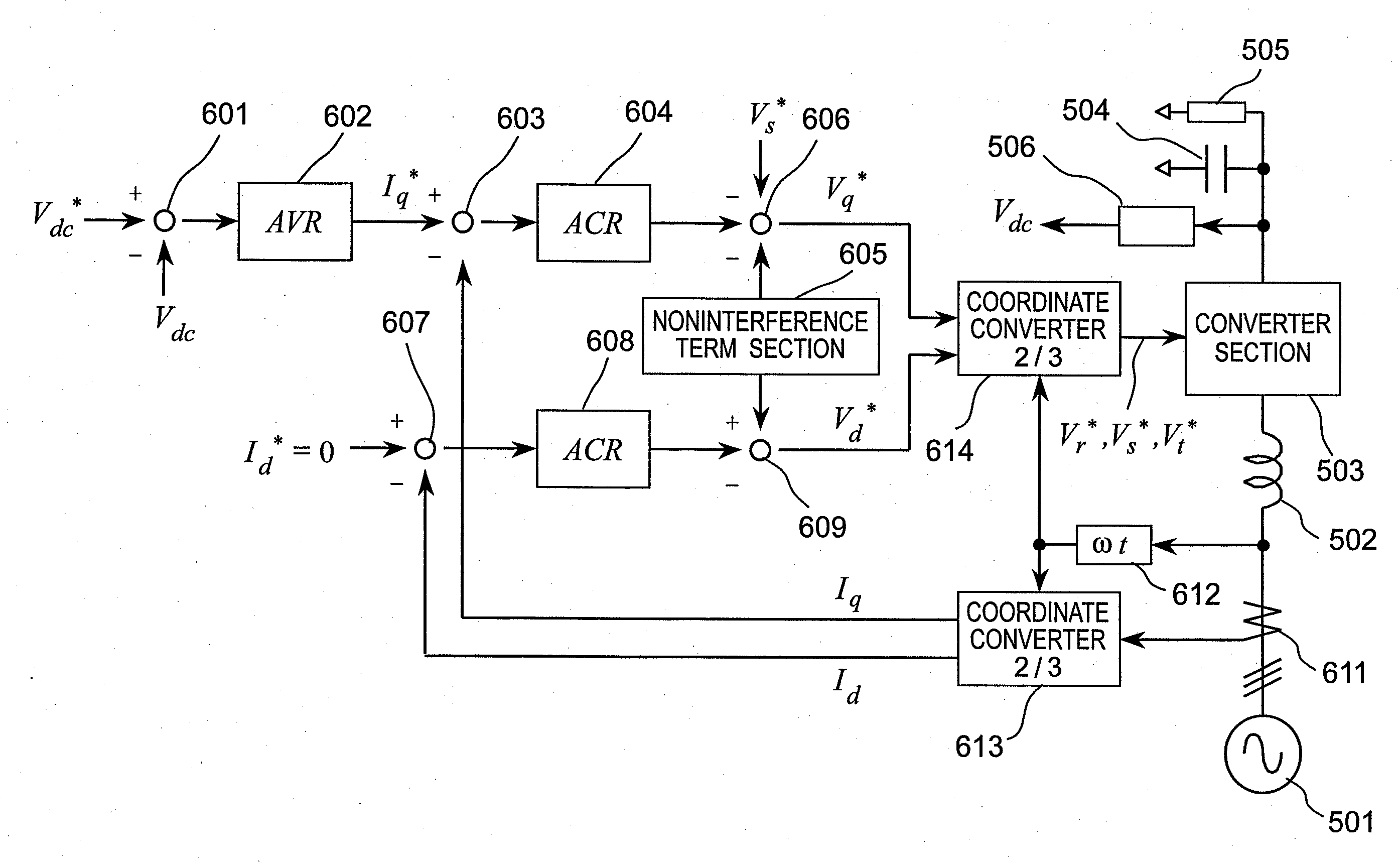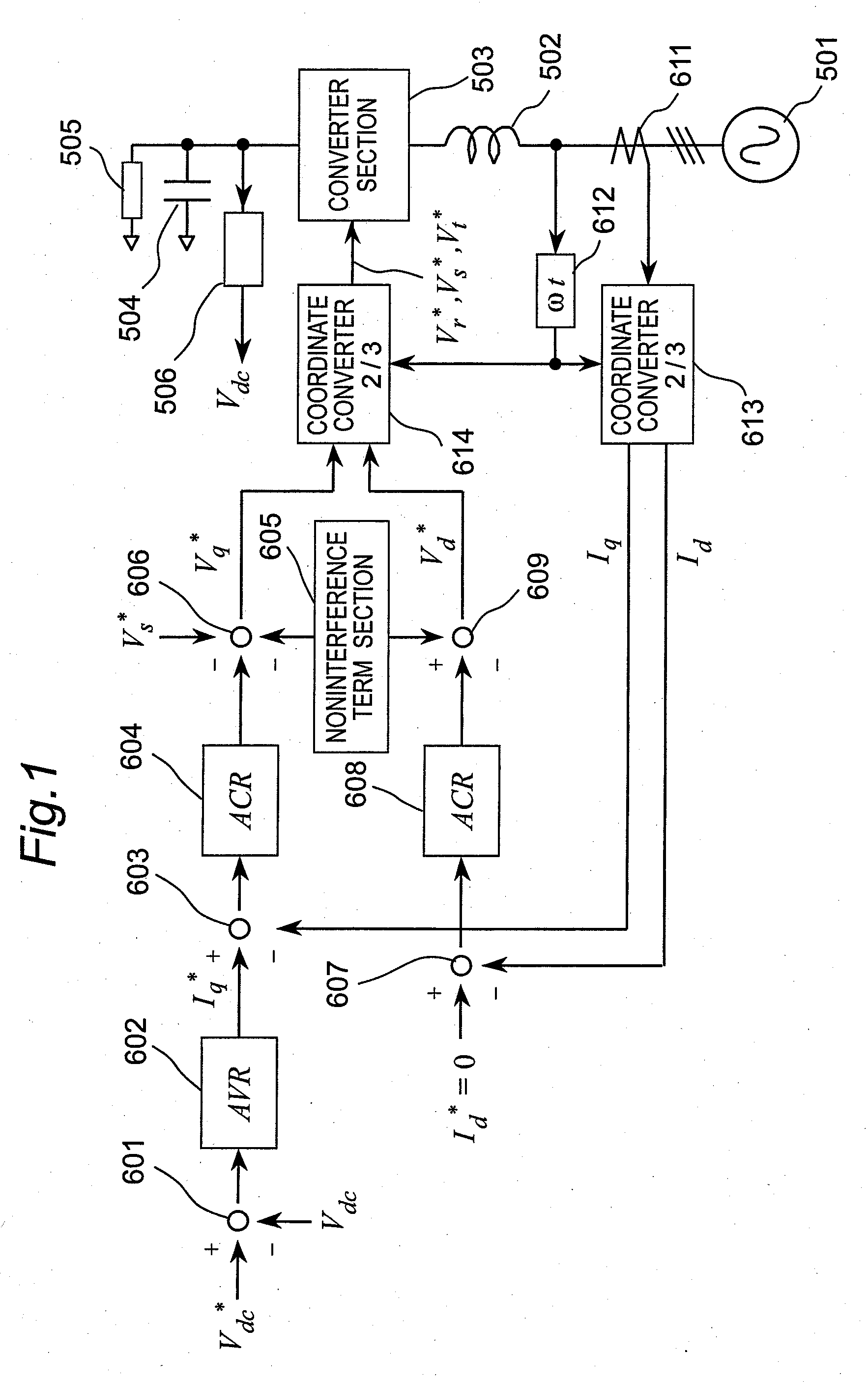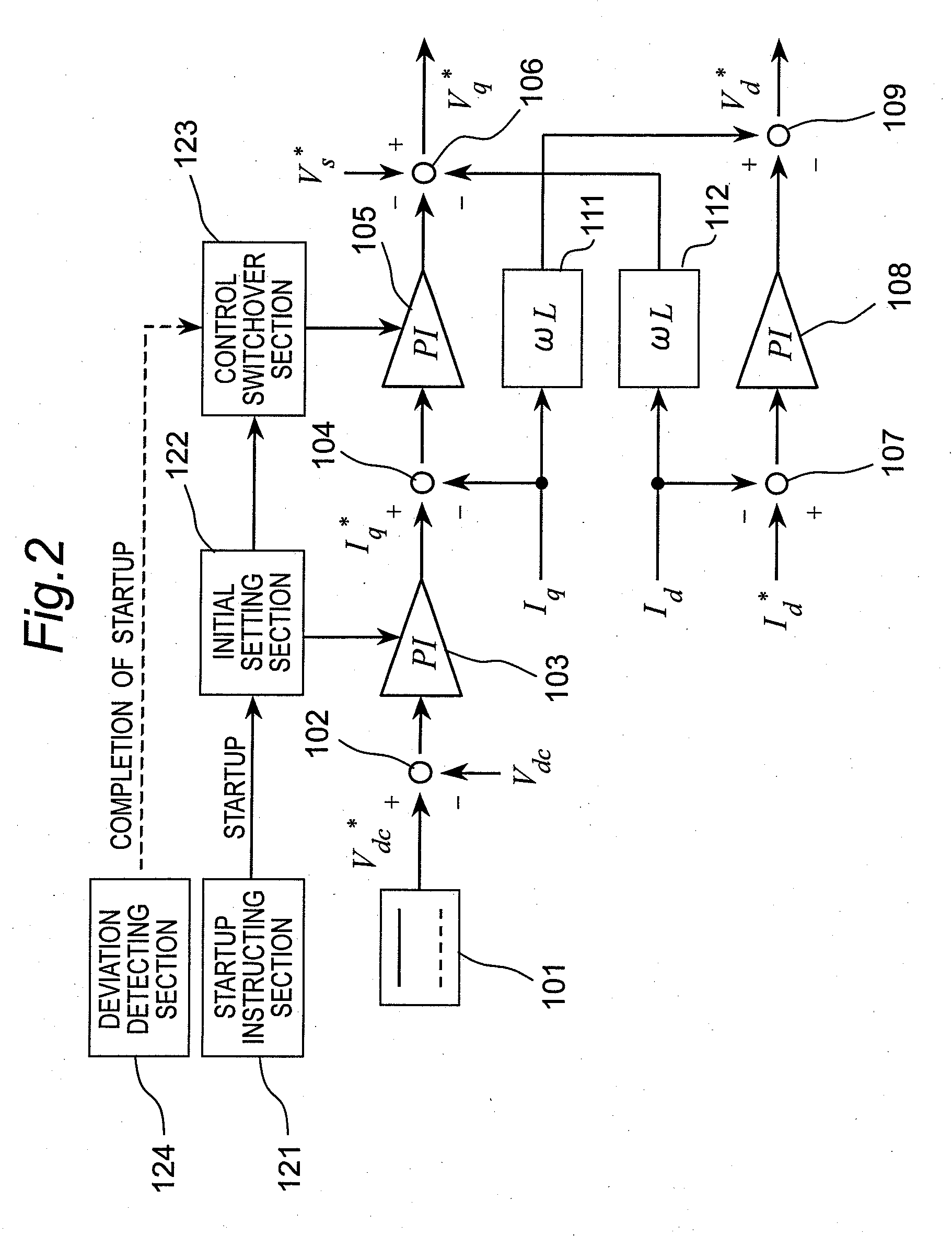Current control type converter
a converter and control type technology, applied in the direction of ac-dc conversion without reversal, power conversion system, electrical apparatus, etc., can solve the problems of dc voltage overshoot, integrator interference with each other, overshoot of dc voltage, etc., and achieve the effect of accurate detection
- Summary
- Abstract
- Description
- Claims
- Application Information
AI Technical Summary
Benefits of technology
Problems solved by technology
Method used
Image
Examples
first embodiment
[0114]FIG. 2 shows a block diagram of the essential part of the control system of a current control type converter according to the first embodiment of the invention.
[0115]As shown in FIG. 2, the current control type converter includes a DC voltage instructing section 101 that outputs a DC voltage instruction value Vdc*, an adder-subtractor 102 that subtracts a DC voltage value Vdc from the DC voltage instruction value Vdc* from the DC voltage instructing section 101, a PI controller 103 that serves as one example of the voltage controller for calculating and outputting an active current instruction value Iq* by proportional-plus-integral control to perform proportional integration of a deviation between the DC voltage instruction value Vdc* outputted from the adder-subtractor 102 and the DC voltage value Vdc, an adder-subtractor 104 that subtracts an active current Iq from the active current instruction value Iq* from the PI controller 103, a PI controller 105 that serves as one ex...
second embodiment
[0123]FIG. 4 shows a block diagram of the essential part of the control system of a current control type converter according to the second embodiment of the invention.
[0124]As shown in FIG. 4, the current control type converter includes a DC voltage instructing section 201 that outputs a DC voltage instruction value Vdc*, an adder-subtractor 202 that subtracts a DC voltage value Vdc from the DC voltage instruction value Vdc* from the DC voltage instructing section 201, a PI controller 203 that serves as one example of the voltage controller for calculating and outputting an active current instruction value Iq* by proportional-plus-integral control to perform proportional integration of a deviation between the DC voltage instruction value Vdc* outputted from the adder-subtractor 202 and the DC voltage value Vdc, an adder-subtractor 204 that subtracts an active current Iq from the active current instruction value Iq* from the PI controller 203, a PI controller 205 that serves as one e...
third embodiment
[0131]FIG. 6 shows a block diagram of the essential part of the control system of a current control type converter according to the third embodiment of the invention.
[0132]As shown in FIG. 6, the current control type converter includes a DC voltage instructing section 301 that outputs a DC voltage instruction value Vdc*, an adder-subtractor 302 that subtracts a DC voltage value Vdc from the DC voltage instruction value Vdc* from the DC voltage instructing section 301, a PI controller 303 that serves as one example of the voltage controller for calculating and outputting an active current instruction value Iq* by proportional-plus-integral control to perform proportional integration of a deviation between the DC voltage instruction value Vdc* outputted from the adder-subtractor 302 and the DC voltage value Vdc, an adder-subtractor 304 that subtracts an active current Iq from the active current instruction value Iq* from the PI controller 303, a PI controller 305 that serves as one ex...
PUM
 Login to View More
Login to View More Abstract
Description
Claims
Application Information
 Login to View More
Login to View More - R&D
- Intellectual Property
- Life Sciences
- Materials
- Tech Scout
- Unparalleled Data Quality
- Higher Quality Content
- 60% Fewer Hallucinations
Browse by: Latest US Patents, China's latest patents, Technical Efficacy Thesaurus, Application Domain, Technology Topic, Popular Technical Reports.
© 2025 PatSnap. All rights reserved.Legal|Privacy policy|Modern Slavery Act Transparency Statement|Sitemap|About US| Contact US: help@patsnap.com



